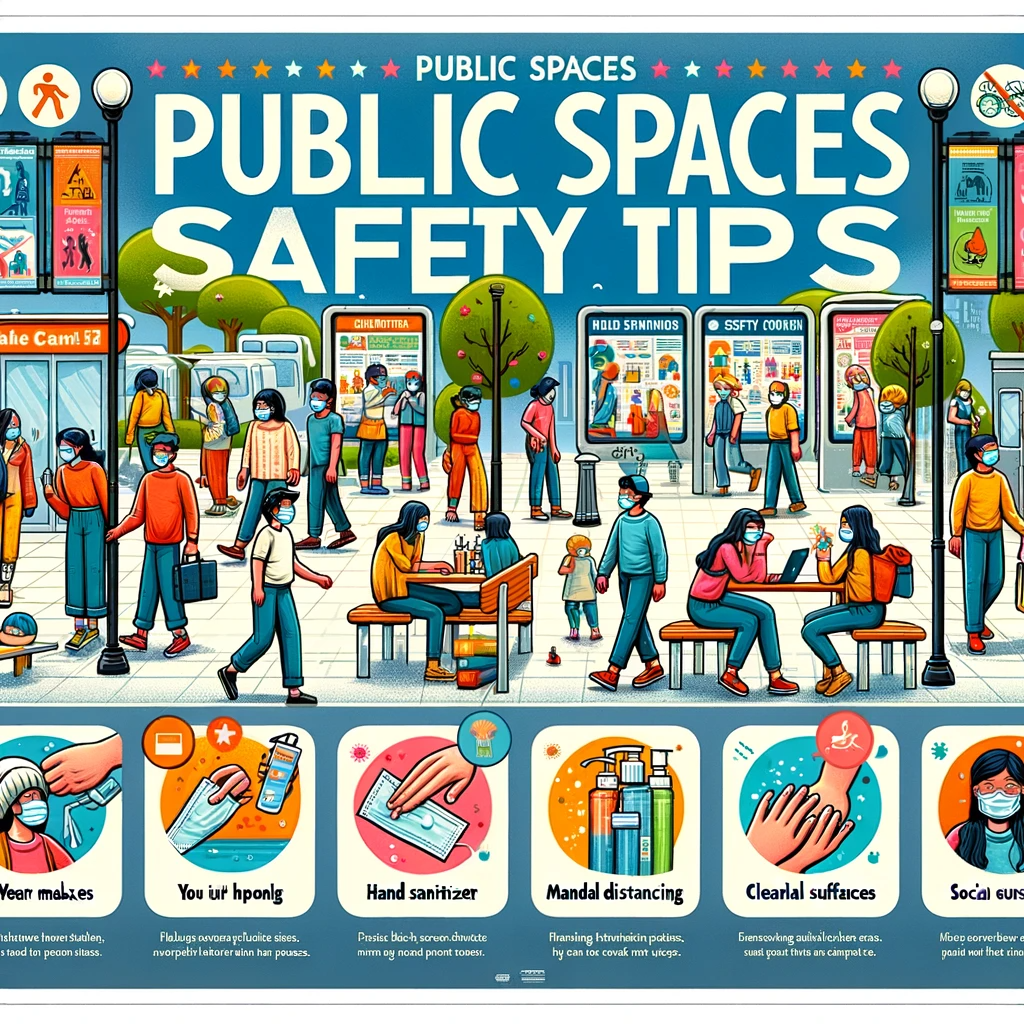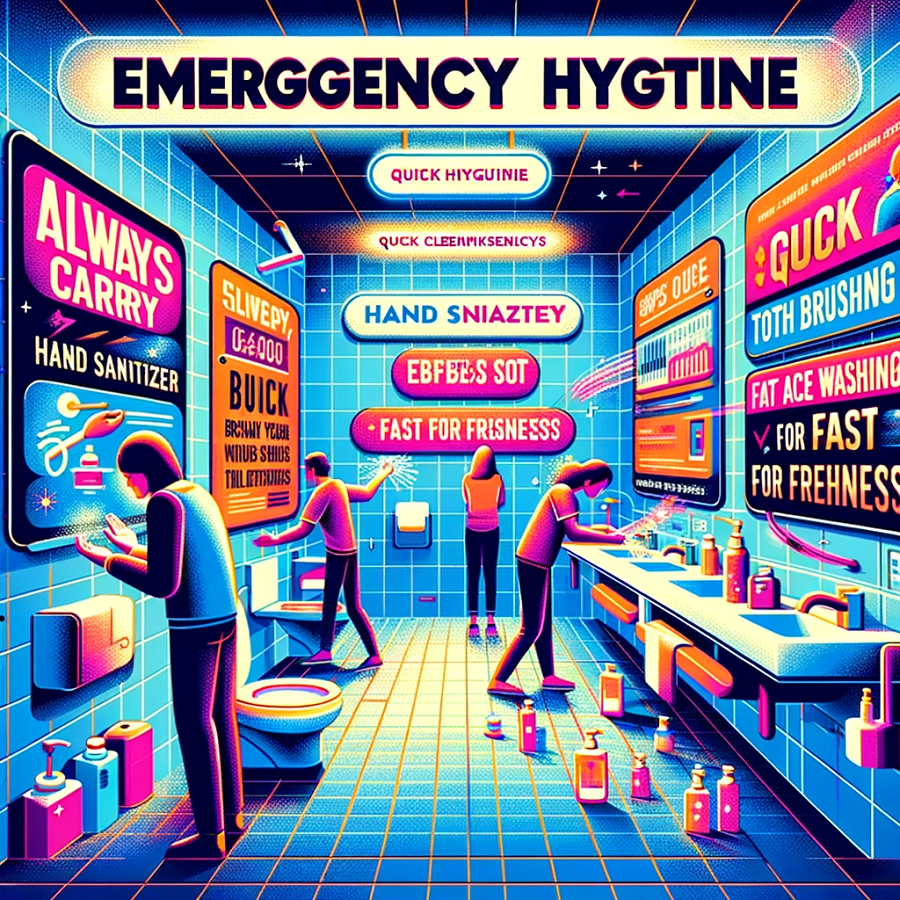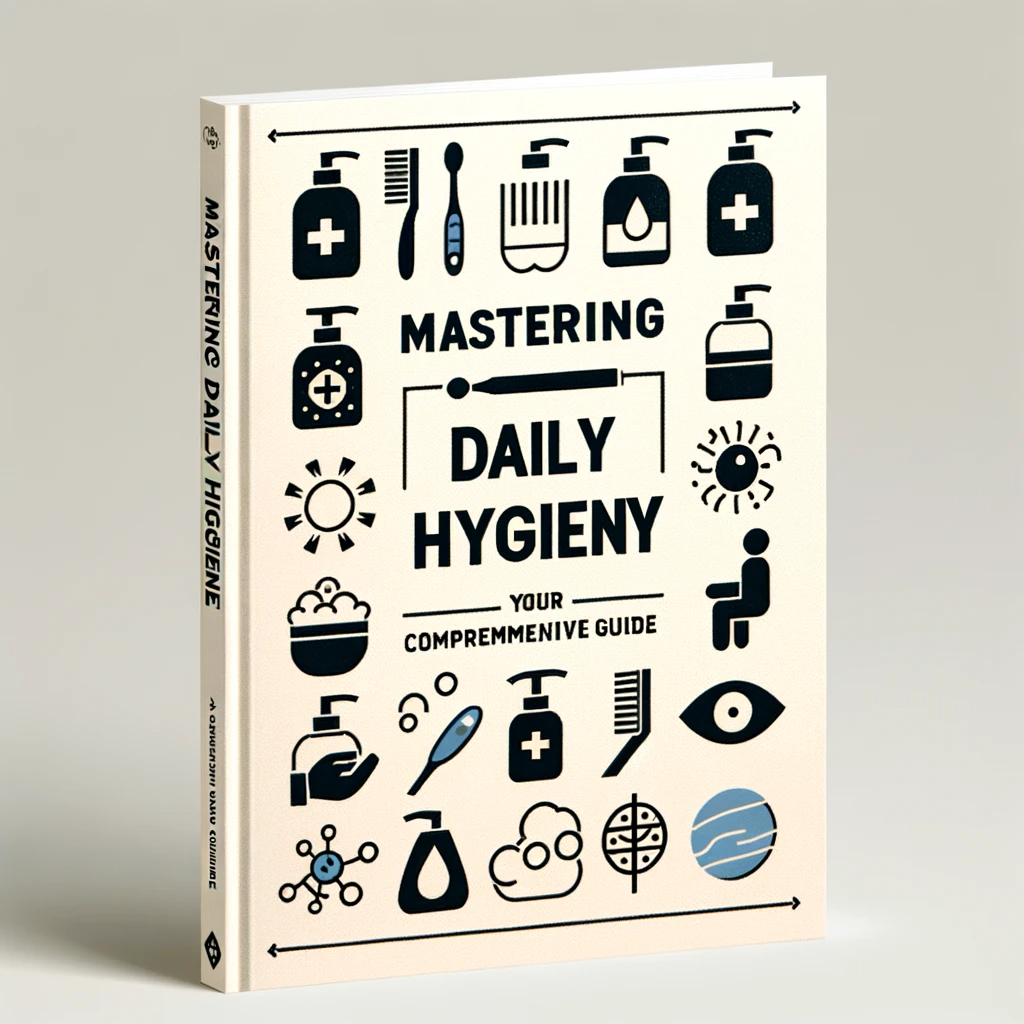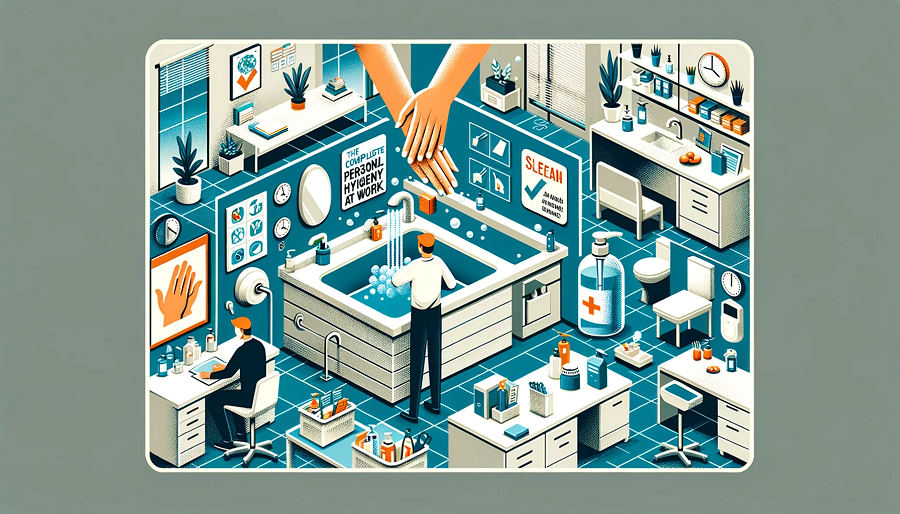In healthcare, where the well-being of individuals is of paramount importance, the practice of healthcare hygiene emerges as an essential cornerstone. Healthcare hygiene encompasses a multitude of practices and protocols aimed at creating and maintaining a clean, sterile, and infection-free environment within healthcare facilities. It is not merely a set of guidelines; rather, it is a commitment to safeguarding the health of both patients and healthcare providers. In this comprehensive exploration, we delve into the critical facets of healthcare hygiene, emphasizing its significance and unveiling the best practices that both patients and healthcare professionals should embrace. From maintaining pristine environments to mastering the art of hand hygiene, ensuring effective sterilization and disinfection, implementing stringent infection control measures, and continually improving hygiene efforts, healthcare hygiene is the linchpin that upholds the promise of a healthier, safer healthcare ecosystem. Join us on this journey to discover the vital role that healthcare hygiene plays in preserving the well-being of individuals and communities alike.
| Category | Tips |
|---|---|
| Hand Hygiene | – Wash hands with soap and water for 20 seconds. |
| – Use hand sanitizer with at least 60% alcohol when soap is not available. | |
| – Wash hands before and after patient contact. | |
| – Scrub all hand surfaces, including between fingers and under nails. | |
| Respiratory Hygiene | – Cover mouth and nose when coughing or sneezing, preferably with a tissue or elbow. |
| – Dispose of used tissues properly. | |
| Isolation Compliance | – Follow isolation protocols if you have a contagious illness. |
| Vaccination | – Stay up-to-date with vaccinations to prevent preventable diseases. |
| Awareness | – Be aware of your surroundings and the cleanliness of your environment. |
| Hand Hygiene (Providers) | – Wash hands before and after patient contact. |
| – Use hand sanitizer when soap and water are not readily available. | |
| PPE Usage | – Wear appropriate personal protective equipment (PPE) when needed. |
| Sterilization and Disinfection | – Follow strict protocols for sterilization and disinfection. |
| – Use EPA-approved disinfectants for surfaces. | |
| Environmental Cleaning | – Regularly clean and disinfect surfaces and patient rooms. |
| – Pay attention to high-touch areas. | |
| Isolation Rooms | – Designate isolation rooms for contagious patients. |
| Education and Training | – Provide ongoing education and training on hygiene protocols. |
| Data Collection and Analysis | – Collect and analyze hygiene-related data. |
| Patient Engagement | – Engage patients in healthcare hygiene discussions. |
| Innovation | – Explore new technologies and innovations to enhance hygiene practices. |
Healthcare Hygiene: Safeguarding Wellness Through Clean Practices
Healthcare hygiene is a fundamental aspect of modern healthcare that revolves around maintaining a clean and sanitary environment to prevent the spread of infections and ensure the well-being of patients and healthcare providers. In this article, we will explore the essential aspects of healthcare hygiene, its significance in the medical field, and the best practices both patients and healthcare providers should adopt to promote a healthier healthcare ecosystem.
The Importance of Healthcare Hygiene
Why is healthcare hygiene so vital? It’s because the healthcare environment is where people come to heal, and any lapse in hygiene can lead to the spread of infections, compromising the health of both patients and healthcare workers. Here’s why healthcare hygiene is of paramount importance:
- Infection Prevention: The primary goal of healthcare hygiene is to prevent the spread of infections within healthcare facilities. Patients often have compromised immune systems, making them more susceptible to illnesses. By maintaining a clean and sterile environment, the risk of infections can be significantly reduced.
- Patient Safety: Patients trust healthcare providers to prioritize their safety and well-being. Adhering to stringent hygiene practices instills confidence in patients that they are receiving the best care possible.
- Healthcare Worker Safety: Healthcare professionals also benefit from a hygienic environment. Proper hygiene practices protect them from contracting and spreading diseases, allowing them to provide care more effectively.
- Cost Reduction: Infections acquired in healthcare settings can lead to extended hospital stays, increased healthcare costs, and even legal liabilities. By focusing on hygiene, healthcare facilities can reduce these risks and save resources.
- Community Health: Infections that originate within healthcare facilities can spill over into the community, leading to broader outbreaks. Maintaining high standards of healthcare hygiene protects not only those within the facility but the broader community as well.
Best Practices for Patients
Patients can actively contribute to healthcare hygiene by following these best practices:
- Hand Hygiene: Regularly wash your hands with soap and water for at least 20 seconds, especially before eating, after using the restroom, and after touching surfaces in the healthcare setting.
- Respiratory Hygiene: Cover your mouth and nose when coughing or sneezing, preferably with a tissue or your elbow. Dispose of used tissues properly.
- Isolation Compliance: If you have a contagious illness, adhere to isolation protocols recommended by healthcare providers to prevent spreading the infection to others.
- Vaccination: Stay up-to-date with vaccinations to prevent preventable diseases and reduce the risk of outbreaks.
- Awareness: Be aware of your surroundings and the cleanliness of your environment. Don’t hesitate to ask healthcare providers about their hygiene practices.
Best Practices for Healthcare Providers
Healthcare providers are at the forefront of healthcare hygiene. Here are some best practices they should follow:
- Hand Hygiene: Healthcare workers should rigorously practice hand hygiene, washing their hands before and after patient contact, and using hand sanitizers when necessary.
- Personal Protective Equipment (PPE): Utilize appropriate PPE, such as gloves, masks, and gowns, to protect both healthcare workers and patients.
- Sterilization and Disinfection: Strictly adhere to protocols for sterilization and disinfection of medical equipment, surfaces, and patient rooms. Regularly audit and maintain equipment to ensure effectiveness.
- Environmental Cleaning: Ensure the cleanliness of the healthcare facility by regularly cleaning and disinfecting surfaces, focusing on high-touch areas.
- Education and Training: Provide ongoing education and training to healthcare staff on hygiene protocols and best practices to keep them informed and accountable.
Maintaining a Clean Environment
A Pristine Healthcare Setting: The Foundation of Healthcare Hygiene
Maintaining a clean and sterile environment is one of the cornerstones of effective healthcare hygiene. A clean healthcare setting not only promotes patient safety but also prevents the spread of infections, creating a healthier and more conducive environment for both patients and healthcare providers. In this section, we will delve into the crucial aspects of maintaining a clean healthcare environment and the impact it has on the quality of care.
The Significance of a Clean Environment
- Patient Well-being: A clean and tidy healthcare facility provides patients with a sense of comfort and security. It contributes to their overall well-being and aids in the healing process.
- Infection Prevention: Proper cleaning and disinfection of surfaces and equipment significantly reduce the risk of healthcare-associated infections (HAIs), which can lead to prolonged hospital stays and even fatalities.
- Healthcare Worker Safety: Healthcare professionals are constantly exposed to various pathogens. A clean environment helps protect them from infections, ensuring they can provide optimal care.
Regular Cleaning and Disinfection
- High-Touch Surfaces: High-touch surfaces such as doorknobs, light switches, and handrails should be cleaned and disinfected frequently to prevent the transfer of germs from one person to another.
- Patient Rooms: Patient rooms should be thoroughly cleaned and disinfected between occupants. Pay attention to frequently touched areas like bed rails, bedside tables, and call buttons.
- Medical Equipment: Properly clean and disinfect medical equipment after each use. Follow manufacturer guidelines to ensure effective sterilization.
- Public Areas: Waiting rooms and common areas should also be cleaned regularly to reduce the risk of cross-contamination.
- Waste Disposal: Dispose of medical waste, including sharps and biohazardous materials, according to established protocols to minimize the risk of exposure.
Hand Hygiene: The Cornerstone of Healthcare Hygiene
Hand hygiene is undoubtedly the most critical aspect of healthcare hygiene. It’s a simple yet powerful practice that can save lives. Here’s why it’s the cornerstone:
- Transmission Prevention: Germs often spread through touch. Proper handwashing helps prevent the transmission of bacteria and viruses from contaminated surfaces to patients and healthcare providers.
- Patient Safety: Healthcare workers must wash their hands before and after patient contact. This practice significantly reduces the risk of infections being transmitted from healthcare providers to patients.
- Handwashing Technique: Effective handwashing includes wetting hands, applying soap, scrubbing all surfaces for at least 20 seconds, rinsing thoroughly, and drying with a clean towel or air dryer.
- Hand Sanitizers: In situations where soap and water are not readily available, healthcare workers can use hand sanitizers containing at least 60% alcohol to kill germs.
Sterilization and Disinfection
Proper sterilization and disinfection of medical equipment and surfaces are essential to healthcare hygiene. Here’s what you need to know:
- Sterilization: Sterilization ensures that all microorganisms, including bacteria, viruses, and fungi, are killed. It is critical for surgical instruments and other items that come into contact with the bloodstream or sterile body cavities.
- Disinfection: Disinfection kills most microorganisms but may not eliminate all spores. It is suitable for surfaces and equipment that do not require sterilization.
- EPA-Approved Disinfectants: Use Environmental Protection Agency (EPA) approved disinfectants that are effective against a wide range of pathogens. Follow the manufacturer’s instructions for concentration and contact time.
- Regular Auditing: Regularly audit the sterilization and disinfection processes to ensure they are effective and compliant with guidelines.
Infection Control Measures
To effectively control infections within healthcare settings, implement these measures:
- Isolation Rooms: Designate isolation rooms for patients with contagious illnesses to prevent the spread of infections to others.
- Personal Protective Equipment (PPE): Ensure that healthcare providers wear appropriate PPE, including gloves, masks, gowns, and eye protection, when dealing with potentially infectious patients.
- Hand Hygiene Stations: Place hand hygiene stations strategically throughout the facility to encourage regular handwashing among patients and visitors.
- Patient Education: Educate patients on proper hand hygiene and respiratory etiquette to reduce the risk of cross-contamination.
Improving Healthcare Hygiene Efforts
Continuous improvement is crucial in healthcare hygiene. Here’s how we can enhance our hygiene efforts:
- Education and Training: Provide ongoing education and training for healthcare staff on hygiene protocols and best practices.
- Data Collection and Analysis: Collect and analyze hygiene-related data to identify areas that need improvement and implement targeted interventions.
- Patient Engagement: Engage patients in healthcare hygiene by encouraging them to ask questions and voice concerns about cleanliness and infection control.
- Innovation: Explore new technologies and innovations, such as UV-C disinfection devices, to augment existing hygiene practices.
Final Thoughts:
Healthcare hygiene stands as the linchpin of a thriving and secure healthcare system. We’ve uncovered its paramount significance in preventing infections, safeguarding patient and healthcare provider well-being, and reducing healthcare costs. By adhering to the best practices outlined in this comprehensive guide, from maintaining pristine environments to mastering hand hygiene, effective sterilization and disinfection, stringent infection control measures, and continual improvement efforts, we reinforce our commitment to a healthier future. Healthcare hygiene is not just a practice; it’s a collective responsibility. By upholding these principles, we ensure that healthcare facilities remain places of healing and trust, where the well-being of patients and healthcare providers remains the top priority.
FAQs:
Q1: What is healthcare hygiene, and why is it important?
A1: Healthcare hygiene refers to the practices and protocols followed to maintain a clean and sterile environment within healthcare facilities. It is crucial for preventing infections, safeguarding patient and healthcare provider well-being, and reducing healthcare costs.
Q2: What are the best practices for patients in terms of healthcare hygiene?
A2: Patients can contribute to healthcare hygiene by practicing proper hand hygiene, covering their mouth and nose when coughing or sneezing, adhering to isolation protocols if contagious, staying up-to-date with vaccinations, and being aware of their surroundings.
Q3: What are the best practices for healthcare providers regarding healthcare hygiene?
A3: Healthcare providers should rigorously practice hand hygiene, use personal protective equipment (PPE) as needed, follow strict protocols for sterilization and disinfection, ensure regular cleaning of high-touch surfaces, and provide ongoing education and training on hygiene protocols.
Q4: Why is hand hygiene considered the cornerstone of healthcare hygiene?
A4: Hand hygiene is the most critical aspect of healthcare hygiene as it prevents the transmission of germs from contaminated surfaces to patients and healthcare providers. Proper handwashing and sanitizing techniques are essential to reduce the risk of infections.
Q5: What is the difference between sterilization and disinfection in healthcare settings?
A5: Sterilization ensures that all microorganisms, including spores, are killed and is critical for surgical instruments and items that contact sterile body cavities. Disinfection kills most microorganisms but may not eliminate all spores and is suitable for surfaces and equipment that do not require sterilization.
Q6: How can healthcare facilities improve their hygiene efforts?
A6: Healthcare facilities can improve hygiene efforts by providing ongoing education and training, collecting and analyzing hygiene-related data, engaging patients in healthcare hygiene, and exploring innovative technologies and practices to enhance hygiene protocols.
Q7: What are some common infection control measures in healthcare settings?
A7: Infection control measures include designating isolation rooms for contagious patients, ensuring healthcare providers wear appropriate PPE, placing hand hygiene stations strategically, and educating patients on proper hand hygiene and respiratory etiquette.
Q8: How does healthcare hygiene benefit the broader community?
A8: Healthcare hygiene not only protects individuals within healthcare facilities but also prevents the spread of infections to the broader community, reducing the risk of outbreaks and improving public health.







